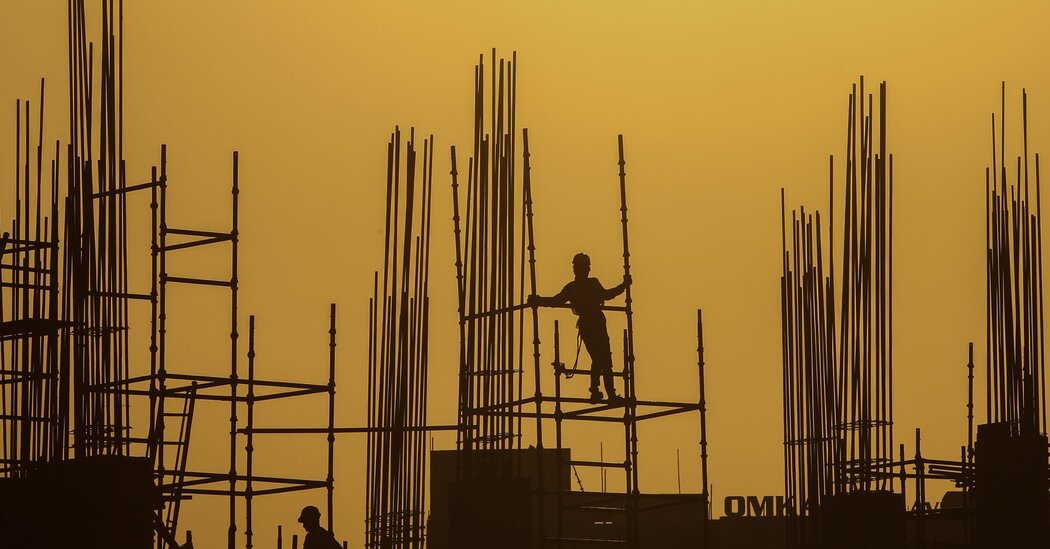Since April, heat waves, most likely fueled by climate change, have reached dangerous levels across India and other Asian countries. This week, many Indian cities, including New Delhi, the capital, recorded temperatures above 115 degrees Fahrenheit. Local governments sent out heat alerts warning people to avoid staying outside and schools in several states were ordered to close.
It’s all happening as hundreds of millions of Indians head to the polls and are expected to re-elect Prime Minister Narendra Modi.
The grueling heat crisis, one of several in India over the last few years, made me wonder if the nation’s leaders had made climate change more central in their campaigns.
Not really, my colleague Suhasini Raj, who covers India, told me.
“In their election manifestoes, India’s top political parties, including the governing Bharatiya Janata Party and the main opposition, the Congress party, have made multiple promises to act on climate damage and reduce emissions,” she said. “But climate pledges on paper are absent from speeches and rallies in the campaign trails.”
Still, as Raj pointed out, Indians are suffering the effects of climate change more acutely than most. “Climate change and pollution lead to loss of livelihoods, forced migrations and kill over two million Indians annually,” she said. “It is projected that 148.3 million people in India will be living in severe climate hot spots by 2050.”
Measuring the impact of heat can be difficult: Estimates of how many deaths can be attributed to heat in India vary from a few hundred to tens of thousands a year. Official tolls often fail to capture the full lethality of extreme temperatures.
Today, I want to explain how India is adapting to extreme heat, even as climbing temperatures are making its transition to a cleaner economy even more difficult. The country is not short of good ideas. But scaling them in the world’s most populous nation is still a challenge.
The rush to adapt
India was the first country in South Asia to create a heat action plan. It started in the city of Ahmedabad after an extreme heat wave in May 2010 resulted in a 43 percent increase in mortality compared with the same period in previous years, as Somini Sengupta wrote.
The plan involved establishing a system to warn residents when dangerous temperatures are expected, educating health care workers to recognize heat-related illnesses and opening cooling centers. Research estimates these programs save more than 1,000 lives a year.
Since 2010, India’s national government has worked with over 20 states and more than 130 cities to establish their own heat action plans. The results are mixed. Many plans aren’t public, fail to reach vulnerable populations or lack the resources to implement solutions.
But local governments are trying a variety of strategies. I asked Vishwas Chitale, from the Council on Energy, Environment and Water, a think tank based in Delhi, to list some of the most successful.
He mentioned Telangana’s statewide policy to help paint or tile roofs in white colors that can reflect sunlight and cool buildings, new heatstroke wards in big hospitals and a workshop run by India’s National Disaster Management Authority to help local officials prepare for extreme heat.
A lot of the work is supported by the Natural Resources Defense Council, an advocacy group. Vijay Limaye, a climate and health scientist who follows India’s heat policies for the group, told me that the country’s experience showed that there were “some tested solutions.” “But they need to be deployed rapidly and at scale,” he said.
India’s difficult energy transition
India is also the fastest-growing big economy in the world and its dependence on coal to produce electricity is a major source of concern in the struggle to curb climate change.
India’s in a bind: It needs to replace coal even as its energy needs are growing quickly, along with its economy. More extreme temperatures create an even bigger burden, as the country is often forced to burn more coal to keep cooling devices running across the country.
This problem may only get more difficult in the future. Scientists say global temperatures will continue to rise and, though only 9 percent of Indians have air-conditioning units now, that number is likely to increase ninefold by 2050.
The good news is that, in recent years, renewable energy capacity has been growing fast, said Kaushik Deb, who runs the India program at Columbia University’s Center on Global Energy Policy.
In the first quarter of this year, for example, 71.5 percent of the new power capacity added in India came from renewable energy, according to an analysis by the Institute for Energy Economics and Financial Analysis. The report also noted that coal accounted for less than half of India’s total capacity for the first time since the 1960s.
Making sure India’s energy needs don’t grow more than necessary is also part of the answer. That means investing in more efficient buildings and appliances, public transportation and electric vehicles, some of which are already part of India’s development plan.
Until India can come up with a “sensible and reasonable adaptation policy for heat wave-kind events,” Deb said, “the demand for electricity will continue to rise.”
Ask NYT Climate: Is biodegradable plastic really a thing?
On the face of it, biodegradable plastic is a miracle. It looks like plastic and works much like plastic. And it goes back to nature after you throw it away.
But there’s a big catch: Just because your plastic fork, cup or doggy poop bag is marketed as biodegradable, that doesn’t necessarily mean it’ll break down in the environment. The same goes for so-called compostable plastic. — Hiroko Tabuchi
Read more about which kinds of plastic break down and under which conditions and ask your own questions via the form at the bottom of the page.
Ask NYT Climate: Is online shopping bad for the planet?
